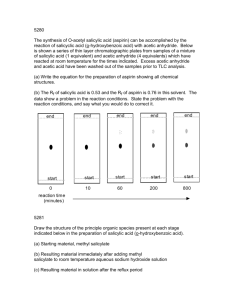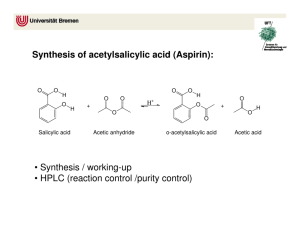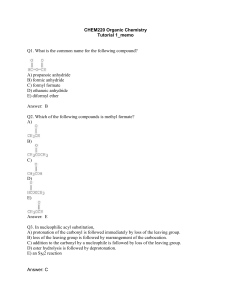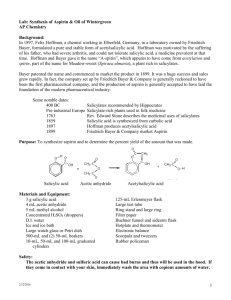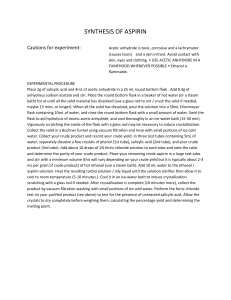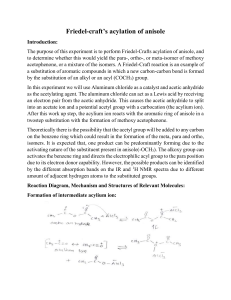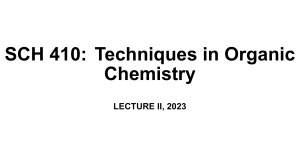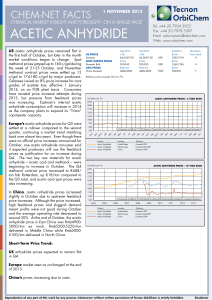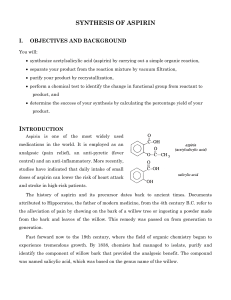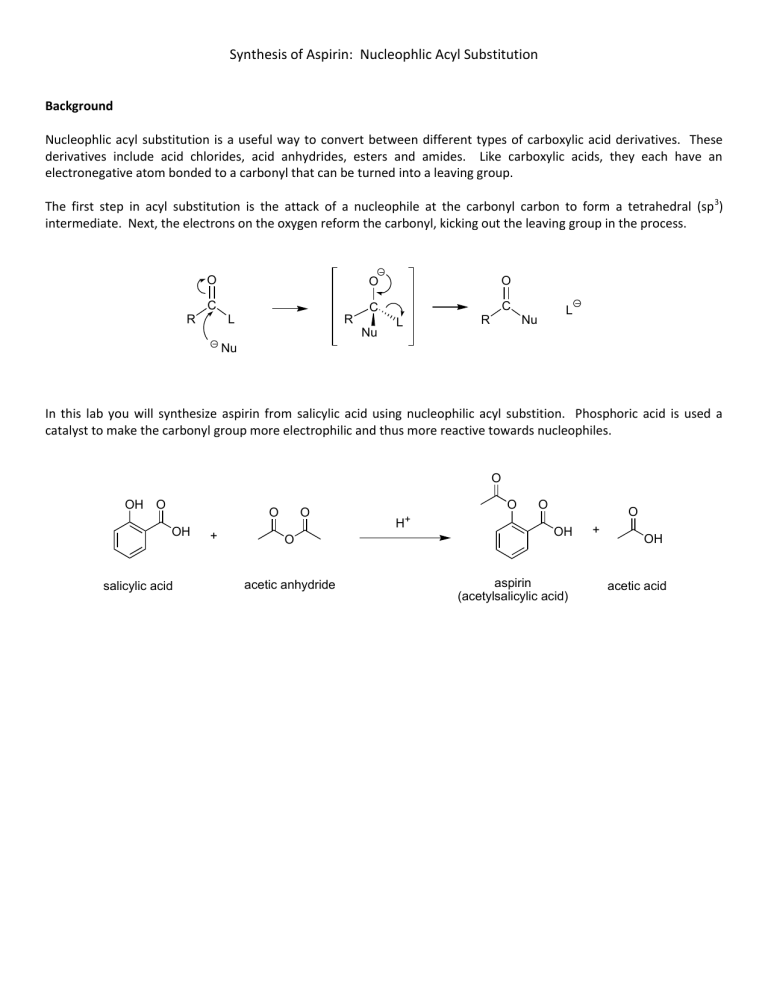
Synthesis of Aspirin: Nucleophlic Acyl Substitution Background Nucleophlic acyl substitution is a useful way to convert between different types of carboxylic acid derivatives. These derivatives include acid chlorides, acid anhydrides, esters and amides. Like carboxylic acids, they each have an electronegative atom bonded to a carbonyl that can be turned into a leaving group. The first step in acyl substitution is the attack of a nucleophile at the carbonyl carbon to form a tetrahedral (sp 3) intermediate. Next, the electrons on the oxygen reform the carbonyl, kicking out the leaving group in the process. O C R O O C C L R Nu L L Nu R Nu In this lab you will synthesize aspirin from salicylic acid using nucleophilic acyl substition. Phosphoric acid is used a catalyst to make the carbonyl group more electrophilic and thus more reactive towards nucleophiles. O OH O O OH salicylic acid + O O acetic anhydride O H+ O O OH aspirin (acetylsalicylic acid) + OH acetic acid Procedure Reaction Setup Add 3.0 g of salicylic acid to a 250 mL Erlenmeyer flask. Next, add 6.0 mL of acetic anhydride to the flask. Carefully add 5 to 10 drops of 85% phosphoric acid to the reaction mixture and swirl to mix everything thoroughly. Heat the mixture for about 10 minutes in a beaker of warm water (about 70-80oC). Isolation and Purification After heating, cautiously add 20 drops of de-ionized water to hydrolyze the leftover acetic anhydride (an exothermic reaction) after which you may quickly add an additional 20 mL of de-ionized water. Cool the flask in an ice bath. If crystals do not appear after 5 minutes, scratch the walls of the flask with a glass stirring rod at the air solvent interface to induce crystallization. Isolate the solid product by vacuum filtration and wash the crystals with up to 10 mL of chilled water. Continue to pull air through the solid and filter paper for several minutes. Allow the solid to dry in envelope until the next lab meeting. Characterization Characterize by melting point and percent yield. Chemicals: salicylic acid, acetic anhydride, 85% phosphoric acid
